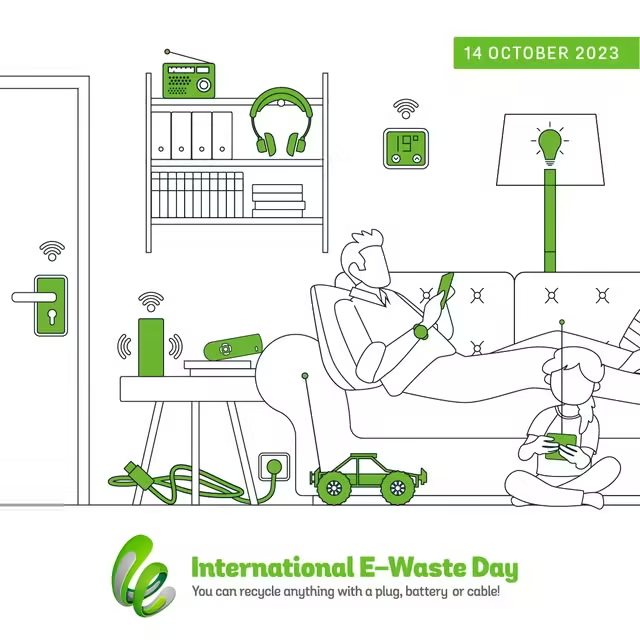
According to a report by The Independent on October 12, research reveals that there is a yearly production of $10 billion worth of "invisible" electronic waste globally, which includes e-cigarettes, drones, and electric tools, among others. These waste products contain valuable raw materials such as iron, copper, and gold worth billions of dollars.
Despite Europe's electronic waste recycling rate reaching 55%, the global rate stands at just above 17%. As technology products become increasingly affordable, electronic waste is becoming the fastest-growing stream of garbage. According to UN monitoring, this means that millions of tons of electronic waste are either sent to landfills, involved in illegal trade, or accumulating in homes every year.
The International E-Waste Day is approaching on October 14th, according to Pascal Leroy, the Secretary General of the non-profit organization WEEE (Waste Electrical and Electronic Equipment Recycling Organization).
Many people do not consider battery-powered or wired products like smoke detectors or smart thermostats to be electronic devices because they lack a plug.
Researchers have calculated the quantity and expected lifespan of products being released into the market using algorithms, leading to a startling revelation about electronic waste. It has been found that nearly 500,000 "invisible" tons of electronic waste, equivalent to the weight of 40 trucks, are generated each year, spanning a distance from Nairobi to Rome.
The weight of the e-cigarette alone is equivalent to that of three Brooklyn Bridges. Additionally, the pile includes 7.3 billion electronic toys such as racing sets, electric trains, musical toys, talking dolls, and drones, which averages to one per person on Earth.
Although the market for extracting lithium from e-cigarettes is still in its early stages, discarded cables provide a simple source of copper. Researchers predict that by 2030, the demand for copper in Europe will increase sixfold to meet the needs of renewable energy, electric vehicles, industry, communication, aerospace, and defense.
"Significant efforts have already been made in tackling plastic pollution and progress has been achieved, garnering increased attention from the public, especially with the upcoming United Nations Plastic Treaty set to be launched by 2024. We hope to see a similar scenario unfold in the realm of electronic waste," Pascal stated.
We welcome news tips, article submissions, interview requests, or comments on this piece.
Please contact us at info@2firsts.com, or reach out to Alan Zhao, CEO of 2Firsts, on LinkedIn
Notice
1. This article is intended solely for professional research purposes related to industry, technology, and policy. Any references to brands or products are made purely for objective description and do not constitute any form of endorsement, recommendation, or promotion by 2Firsts.
2. The use of nicotine-containing products — including, but not limited to, cigarettes, e-cigarettes, nicotine pouchand heated tobacco products — carries significant health risks. Users are responsible for complying with all applicable laws and regulations in their respective jurisdictions.
3. This article is not intended to serve as the basis for any investment decisions or financial advice. 2Firsts assumes no direct or indirect liability for any inaccuracies or errors in the content.
4. Access to this article is strictly prohibited for individuals below the legal age in their jurisdiction.
Copyright
This article is either an original work created by 2Firsts or a reproduction from third-party sources with proper attribution. All copyrights and usage rights belong to 2Firsts or the original content provider. Unauthorized reproduction, distribution, or any other form of unauthorized use by any individual or organization is strictly prohibited. Violators will be held legally accountable.
For copyright-related inquiries, please contact: info@2firsts.com
AI Assistance Disclaimer
This article may have been enhanced using AI tools to improve translation and editorial efficiency. However, due to technical limitations, inaccuracies may occur. Readers are encouraged to refer to the cited sources for the most accurate information.
We welcome any corrections or feedback. Please contact us at: info@2firsts.com
